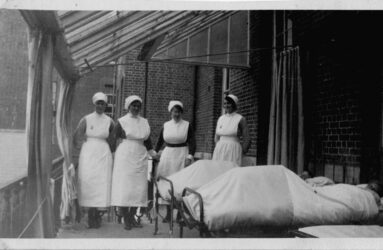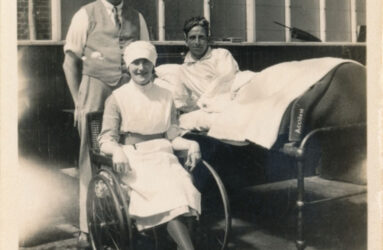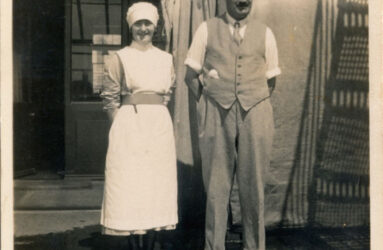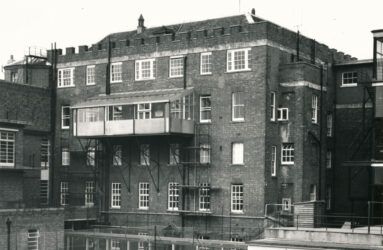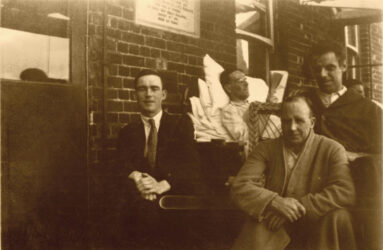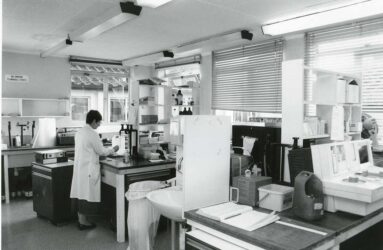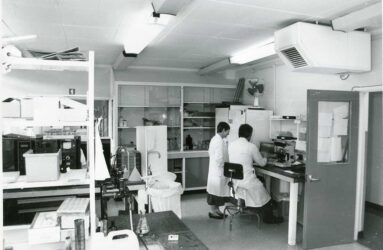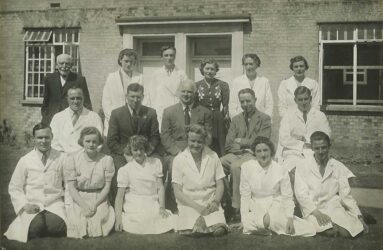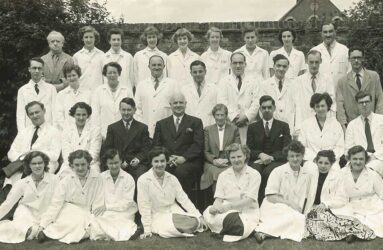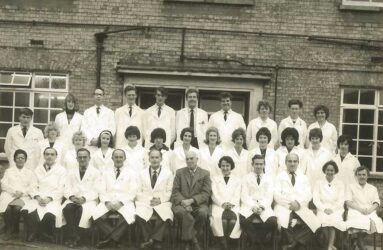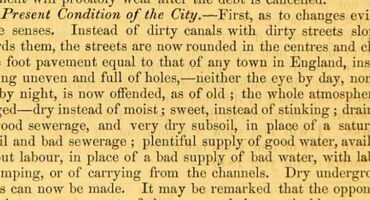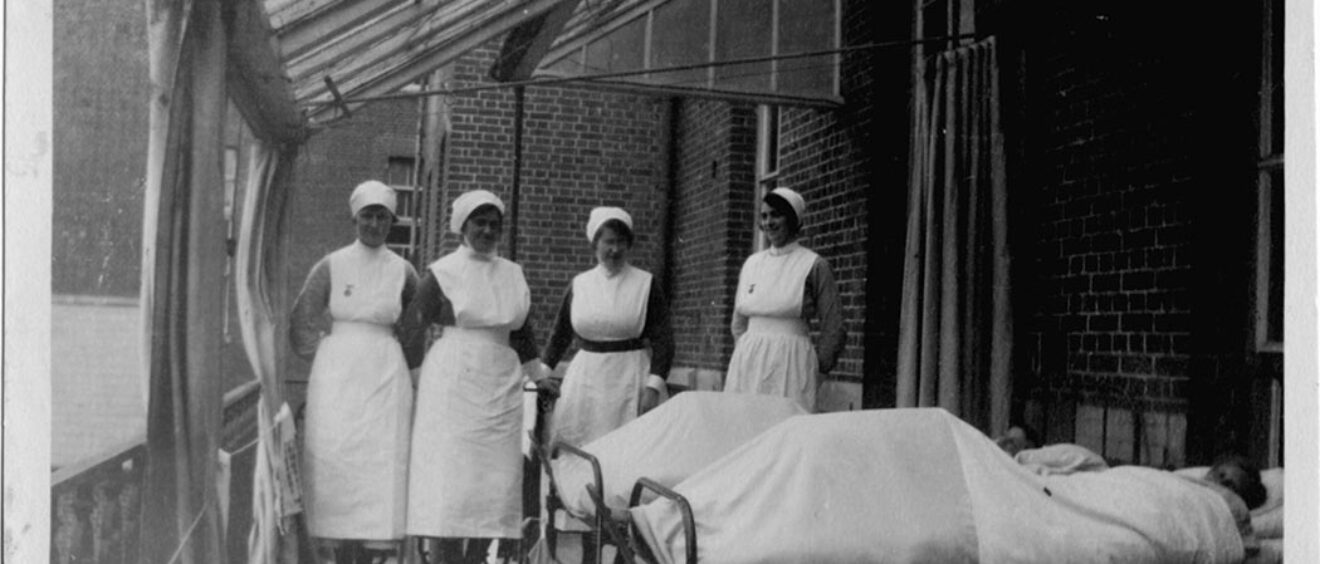
Post epidemic years
As well as isolation hospitals, in the pre-antibiotic era open air wards were popular in hospitals and sanitoriums in the early 20th Century. These were used as an important feature of patient recovery for illnesses such as Tuberculosis
Tuberculosis (TB) is a bacterial infection spread through coughs or sneezes of an infected person. It is a serious condition that mainly affects the lungs. Before antibiotics were introduced, TB was a major health problem in the UK. Nowadays, the condition is much less common and can be treated with a course of antibiotics.
Pictured below are some outside covered areas that allowed beds and patients to be placed in fresh air and sunlight. You can clearly see the curtained sides to the building that were pulled back in good weather for extra ventilation. Salisbury General Infirmary, Radcliffe Balcony, was the structure on the back of Radnor Ward Intensive Care Unit. This was for the benefit of patients to get access to sunlight and fresh air.
Early 1920s Salisbury General Infirmary started building a new Pathology Department and Sterilization areas. This shows there was more focus on public health, bacteriology, analysis of specimens. They stated in their annual report ‘The committee of management hope that this new department will be the means of bringing together the medical practitioner, the patient and the pathologist into closer clinical touch, resulting in the mutual benefit of all three.’
See below some images from the Pathology Department at Salisbury General Infirmary – you can also read about some of its staff members including Dr Darmady and Marina Seabright

